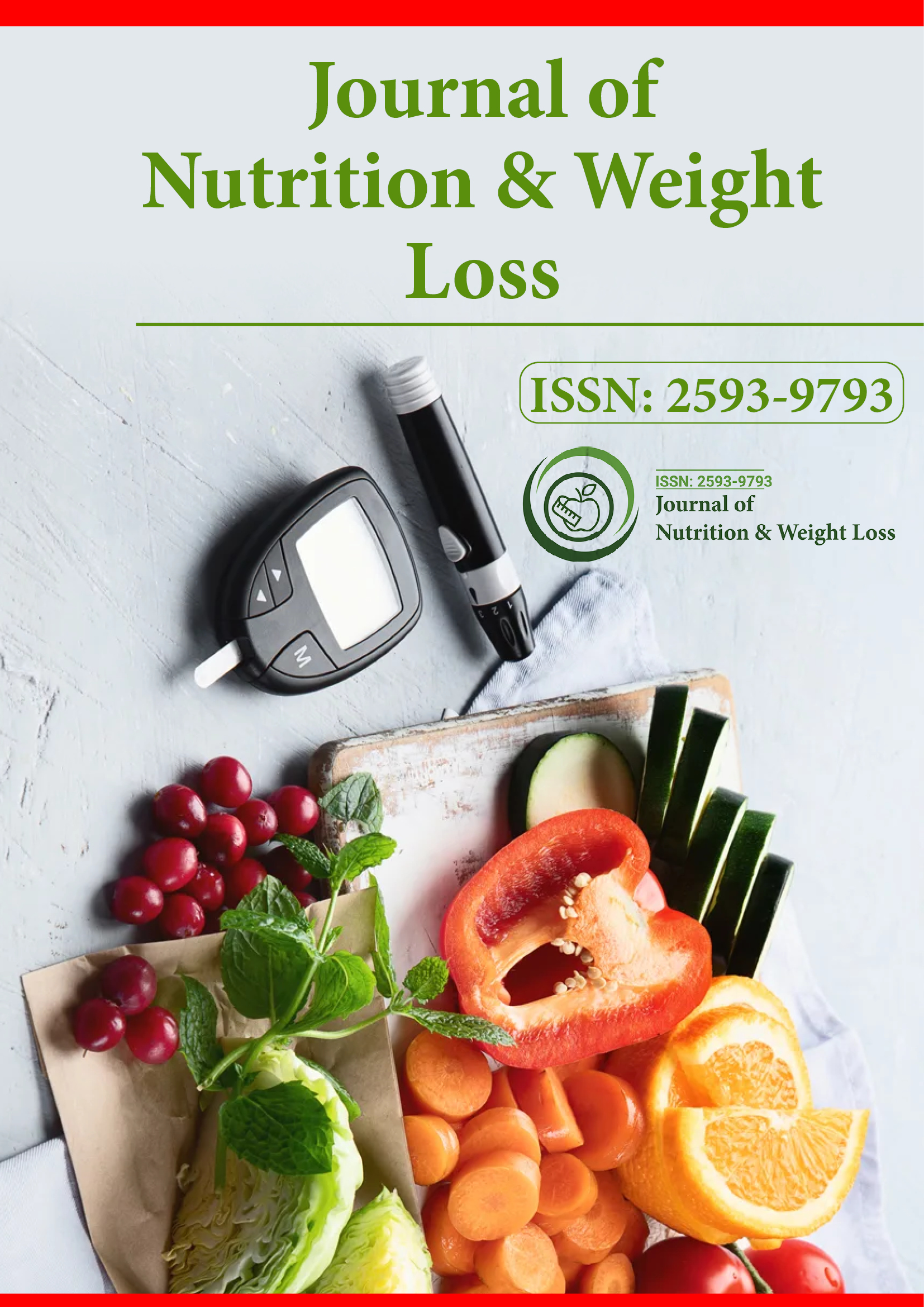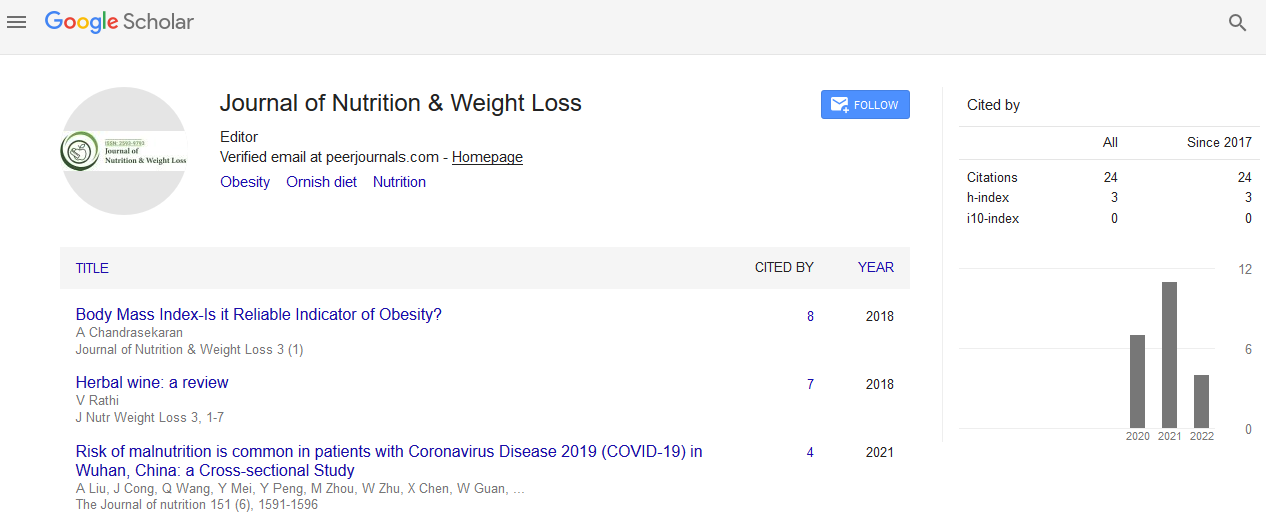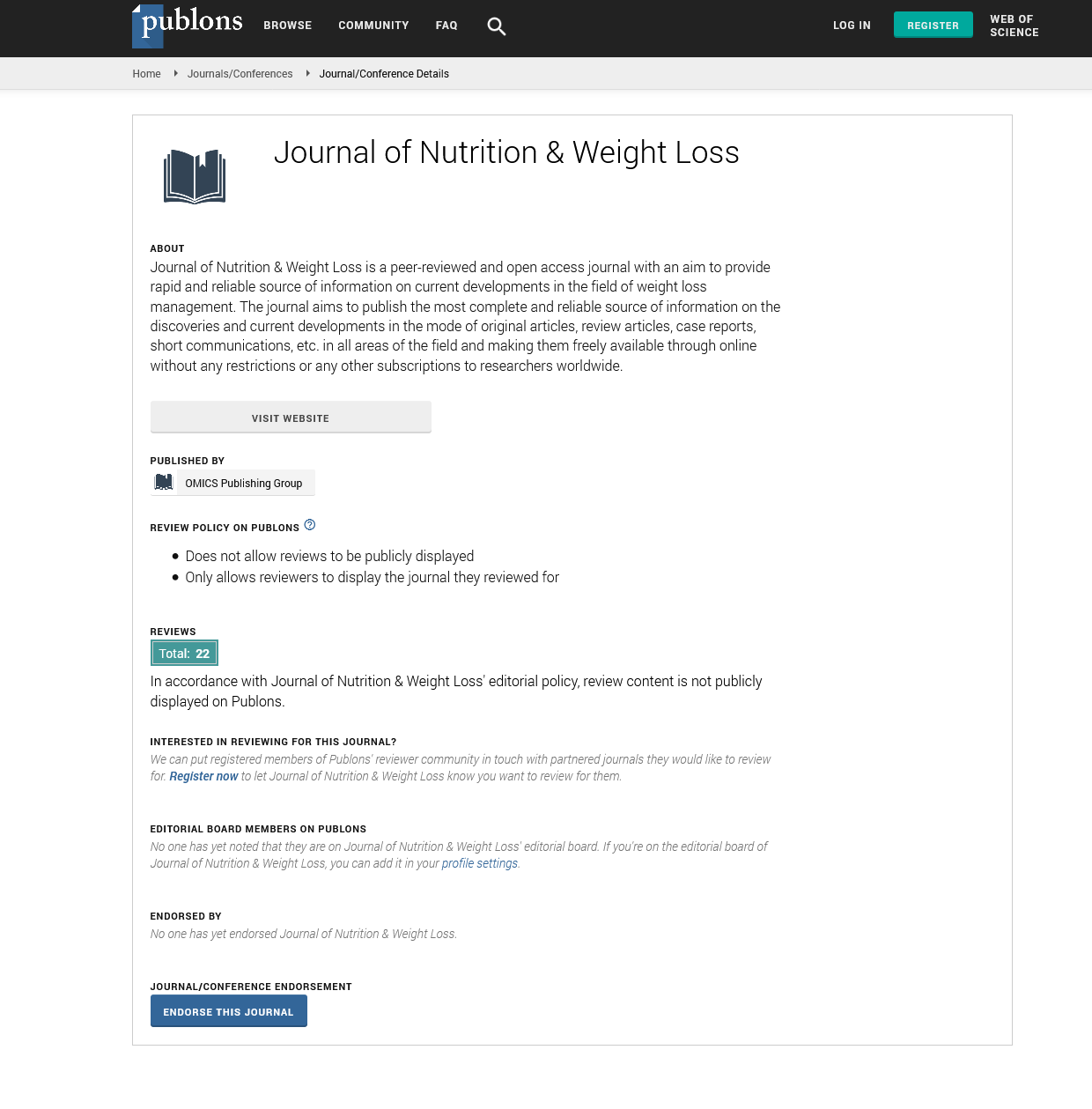Indexed In
- RefSeek
- Hamdard University
- EBSCO A-Z
- Publons
- Euro Pub
- Google Scholar
Useful Links
Share This Page
Journal Flyer

Open Access Journals
- Agri and Aquaculture
- Biochemistry
- Bioinformatics & Systems Biology
- Business & Management
- Chemistry
- Clinical Sciences
- Engineering
- Food & Nutrition
- General Science
- Genetics & Molecular Biology
- Immunology & Microbiology
- Medical Sciences
- Neuroscience & Psychology
- Nursing & Health Care
- Pharmaceutical Sciences
Commentary Article - (2022) Volume 7, Issue 6
Importance of Lipids in Dietary Cholesterol and its Various Forms
George Roald*Received: 07-Oct-2022, Manuscript No. JNWL-22-19226; Editor assigned: 10-Oct-2022, Pre QC No. JNWL-22-19226 (PQ); Reviewed: 25-Oct-2022, QC No. JNWL-22-19226; Revised: 01-Nov-2022, Manuscript No. JNWL-22-19226 (R); Published: 08-Nov-2022, DOI: 10.35248/2593-9793.22.7.151
Description
To produce hormones, vitamin D, and compounds that aid in food digestion, our body needs a certain amount of cholesterol. Our bodies produce all the cholesterol they require. The body may store extra fat inside the organs and in blood arteries, where it can obstruct blood flow, harm the organs, and frequently result in serious illnesses. Humans produce all the cholesterol they require in our liver. The remaining cholesterol in our body is obtained from animal-based diets. For instance, dairy products, pork, and poultry all include dietary cholesterol. Some persons see a change in their cholesterol level from healthy to unhealthy as a result of the increased production.
Important lipids (fats) detected in blood include
Cholesterol: The body needs cholesterol to produce vitamin D and a number of hormones, including cortisol, estrogen, and testosterone. Although the body is capable of producing all the cholesterol it requires, it also gets cholesterol through diet.
Triglycerides: They are made from fatty acids, which are smaller fat molecules, in the liver and intestine. While the body can produce some types of fatty acids, others must be received through food. Cholesterol and triglycerides are bundled with proteins and other chemicals to create lipoproteins, which can circulate in blood.
There are various lipoprotein subtypes. Each type serves a distinct function and is digested and expelled in a marginally different manner. Chylomicrons are a subset of lipoproteins.
Chylomicrons: While triglycerides make up the majority of the lipid core of chylomicrons, they also transport phospholipids and esterified cholesterol, just like other lipoproteins. They have the lowest protein composition of any lipoprotein at just 2%, which explains why they have such a low density during ultracentrifugation. Their primary lipid is triglycerides, which make up more than 75% of the particle.
High-Density Lipoproteins (HDL): A lower risk of heart disease is linked to higher levels of HDL cholesterol. After then, the liver removes it from the body. Our risk of heart disease and stroke can be decreased by having high levels of HDL cholesterol.
Low-Density Lipoproteins (LDL): A clot may occasionally develop and become lodged in the constricted area, leading to a heart attack or stroke. For this reason, LDL cholesterol is frequently referred to as "bad" cholesterol.
Very Low Density Lipoproteins (VLDL): VLDL is thought to be a harmful form of cholesterol. The general consensus is that VLDL and low-density lipoprotein (LDL) are more dangerous than HDL.
Dyslipidemia: It may also indicate that our HDL levels are too low (too high, dyslipidemia). The "bad" kind of cholesterol is referred to as LDL. That's because it can accumulate and create clumps or plaque to grow on the artery walls. A heart attack can be brought on by having too much plaque in patient heart's arteries. High amounts of LDL or triglycerides are referred to as hyperlipidemia. When blood fat levels are outside of the usual range, it is referred to as dyslipidemia.
Too low (Hyperlipidemia): Hypercholesterolemia is a kind of hyperlipidemia in which there are excessive levels of LDL (bad) and non-HDL cholesterol in the blood. This syndrome raises the likelihood of blockages and fatty buildup in arteries. They need to exercise frequently and keep an eye on our diet. They might also have to take a prescription drug.
Problems caused by excessive cholesterol levels
Generally speaking, having high levels of total cholesterol (which includes LDL, HDL, and VLDL cholesterol) and, in particular, high levels of LDL (the "bad") cholesterol, raises the risk of atherosclerosis, and consequently, the risk of having a heart attack or stroke. Not all forms of cholesterol, though, raise this risk. Conversely, a low level of HDL cholesterol may increase risk. A high level of HDL (the "good") cholesterol may reduce risk. However, triglyceride levels that are extremely high (greater than 500 mg/dL [5.65 mmol/L]) can increase the risk of pancreatitis.
Lipid levels measurement
The levels of total cholesterol, triglycerides, LDL cholesterol, and HDL cholesterol as determined after a person has fasted for 12 hours are known as the fasting lipid profile (also known as a lipid panel). Beginning at age 20, doctors performs this test every five years to determine whether a patient is at risk for coronary artery disease. Non-fasting lipid profile screening is typically performed twice in children without risk factors before puberty (typically between the ages of 9 and 11) and between the ages of 17 and 21.
Citation: Roald G (2022) Importance of Lipids in Dietary Cholesterol and its Various Forms. J Nutr Weight Loss. 7:151.
Copyright: © 2022 Roald G. This is an open access article distributed under the terms of the Creative Commons Attribution License, which permits unrestricted use, distribution, and reproduction in any medium, provided the original author and source are credited.


